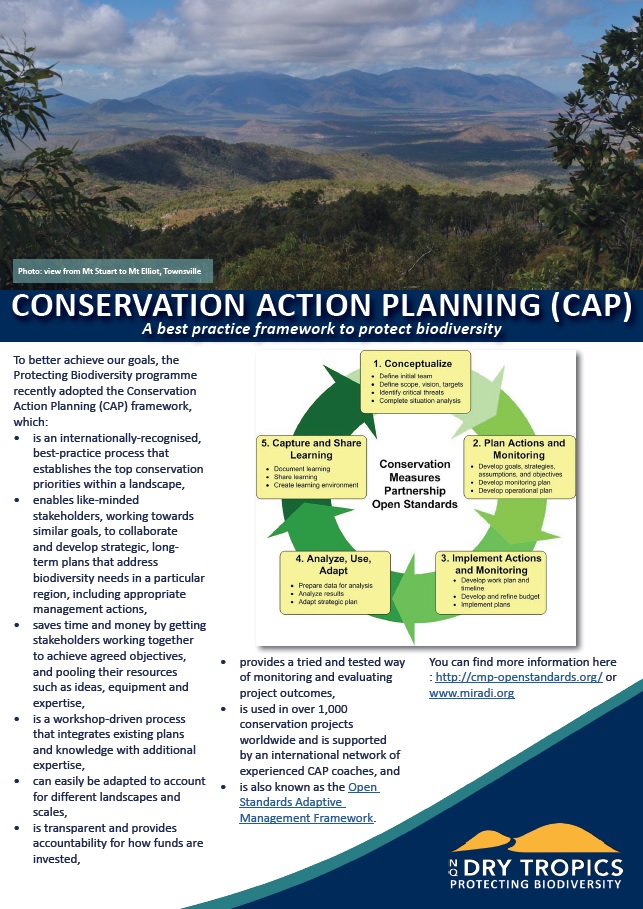It is vital that the data and mapping of our region’s ecosystems is comprehensive, up-to-date and reliable, because all statutory and non-statutory biodiversity planning and management decisions are based on this information. If the data is outdated, unreliable, inaccurate or doesn’t even exist, this can lead to uninformed decisions that have serious consequences for our region’s biodiversity. As an example, Essential Habitat mapping for EVNT species in our region is either outdated or doesn’t include all listed species, resulting in loss of habitat for listed species through region-wide incremental clearing.
Furthermore, we must provide opportunities for information sharing between ‘science’ and the community on our region’s significant biodiversity, the significant threats and the opportunities to increase the community’s capacity to participate in managing and protecting it for future generations.
In 2015, NQ Dry Tropics implemented the internationally recognised ‘Open standards for the practice of biodiversity conservation’ as formalised in a Conservation Action Planning (CAP) framework. The CAP process brings together the regional community to make decisions on biodiversity management in a collaborative and coordinated fashion and then strategically invest in on-ground operational activities to protect, maintain and restore biodiversity. The process will deliver this by:
- identifying the area’s biodiversity of interest and its current and desired status;
- identifying the most critical current or likely threats that could degrade biodiversity;
- recognising the social, economic, political and cultural factors contributing to the threats or representing opportunities to enhance the biodiversity;
- developing strategies to abate the threats and maintain or restore the biodiversity based on the situation at hand; and
- implementing the strategies, monitoring the outcomes and using that information to adapt and learn throughout the life of the project (The Nature Conservancy, 2016).
It will bring together scientists, policy makers, regional land managers and community, to collaboratively develop a plan that will:
- facilitate a local network of interested and involved members;
- consolidate current biodiversity information (condition, regulation, management);
- increase local knowledge of biodiversity condition;
- create awareness and capacity among landholders about how improved land and water practices can benefit biodiversity; and
- ensure appropriate consideration by state and local governments when developing strategic plans for the community and regional economy, and assessing development applications.

